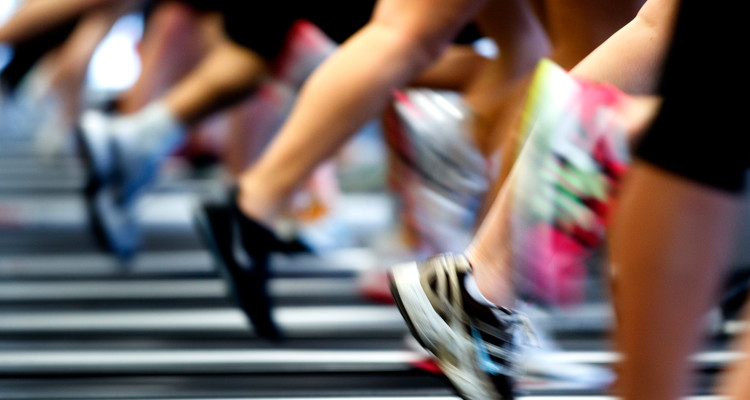Emily Hulstein knew she wanted to find something meaningful.
That thought underscored everything last year as she dug through research articles, conversed with peers and professors, and tried to determine what she might look into for her required class project. Then a senior in Dr. Lesley Scibora’s Research Methods in Exercise Science course and zeroing in on completing a major in the Health and Human Performance Department, Hulstein discovered the kind of research gap that often means one of two things: “You either have something that no one cares about,” Scibora said, “Or something that is untapped and is important. ... I think in Emily’s case it’s very important.”
That gap came between a wealth of studies on how adolescent mental development is tied to physical activity – as well as many similar studies entailing the elderly – but no research regarding college-aged students. She set out to remedy that situation with a 30-participant study gauging the correlation between students’ exercise frequency and intensity, and their GPA. Hulstein used the International Physical Activity Questions form to determine the students' detailed exercise habits and compared those to self-reported grades.
The findings were decidedly clear: If you want to help your GPA, ditch the books for a bit and get up for some vigorous exercise. While the study worked with female non-athletes, the striking correlation delivered a strong message to all St. Thomas students who cite academic focus as a reason not to exercise at any given time.
“A lot of times I knew if I exercised it would be better for me overall,” Hulstein said. “But to really see that correlation firsthand in the St. Thomas community gives it more validity and volume.”
Community impact
Now an alum and working in the health care sector to help keep people in her community well, Hulstein finds her professional life tied on a daily basis to the ideas her research experience cultivated.
“I wanted to do something that would apply to people I spend my time around every day,” she said. “Something everyday individuals could apply to their life and have it be beneficial.”
Settling on research all her peers could relate to, Hulstein is an example of HHP’s emphasis on having students explore topics they’re passionate about. That not only helps prepare them for what career they may pursue, but fuels their desire to contribute something personally meaningful.
“That is important and empowering for the students,” Scibora said.
It also positions them to tap into their surrounding resources; many students conduct studies that aid in the proficiency of athletic teams they’re on (think, “A study on how one stretch versus another prepares sprinters to run the 100-yard dash.”) Other times – as in Hulstein’s case – the studies can help give knowledge to the entire student community the researchers are part of at St. Thomas.
“It’s likely to impact you more to see a study done with kids you go to school with,” Hulstein said. “A good chunk of students want a higher GPA. If they see evidence that can be as simple as taking a half hour to raise their heart rate, they’ll likely make some time for that. It’s different when it’s close to home.”
While St. Thomas is no longer technically “home” for Hulstein, she remains connected: She and Scibora have continued working with the research this fall and recently submitted the project to the American College of Sports Science’s annual conference. Its continued attention in the scientific community could add even more value to Hulsteins’ contribution, research that yielded exactly what she set out to find: something meaningful.







